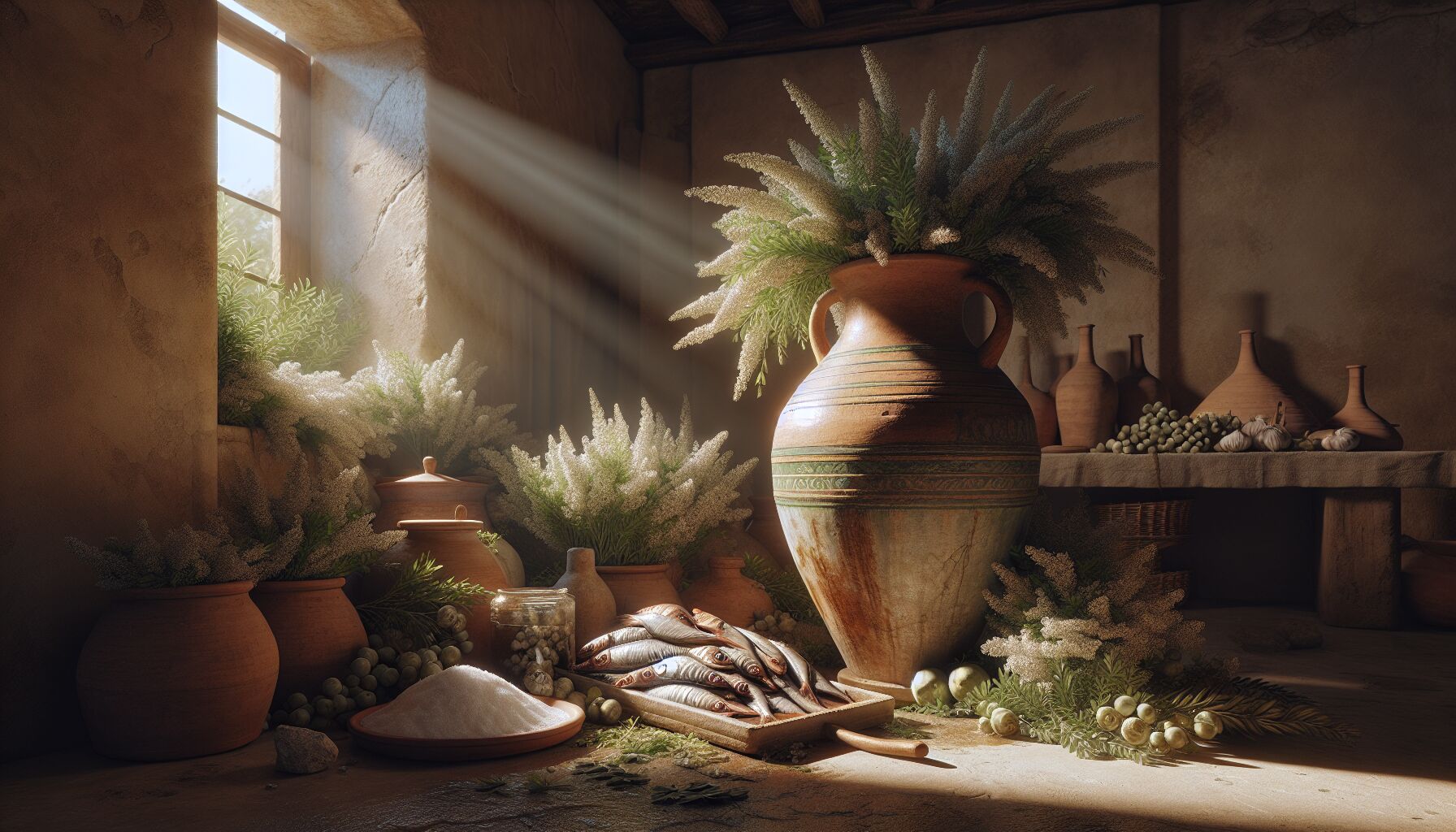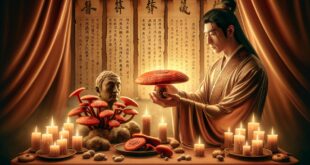It’s easy to romanticize the ancient Mediterranean table—sunbaked patios, olives in terracotta bowls, and the scent of roasting garlic. But that image isn’t just aesthetic. It points to a deeper truth: meals were medicine. What people ate wasn’t based on food fads or calorie apps—it was a daily act of balance, rooted in nature, rhythms, and lived wisdom. Their so-called “superfoods” weren’t branded in bulk bins or powdered into smoothies—they grew outside, fermented in cellars, or baked in handmade clay ovens. Still, the benefits… those are timeless.
Let’s get something straight: the ancient Mediterranean diet was not a monolith. The Greeks approached it differently than the Romans, and even within that, what a shepherd ate near Delphi wasn’t the same as a merchant in Carthage. But common threads stitch the cloth here—ingredients that lasted through centuries, not just because they were filling or cheap, but because they supported *life.* Literal longevity.
Take barley, for example. It was the grain of choice long before wheat became the daily bread. The Greeks made a kind of porridge called “maza”—simple, soaked barley dough often mixed with herbs or honey. Roman soldiers carried “barley cakes” as rations—dense, nourishing, and shelf-stable. And modern studies confirm it wasn’t accidental: barley contains beta-glucans that help regulate blood sugar and reduce cholesterol. It’s not flashy, but it works.
Then there’s olive oil—the liquid gold of the region, and arguably history’s most iconic health food. Cold-pressed from fruit that thrives in limestone soil and harsh sun, extra virgin olive oil was used body-wide: in lamps, in wounds, on skin, and yes, drizzled over almost everything savory. From Crete to Rome, this oil was revered. Not just for its flavor, but for what it did internally. The polyphenols in high-quality olive oil act as powerful antioxidants, which modern research suggests contribute to cognitive clarity and reduced inflammation. Hippocrates—often called the father of Greek medicine—referred to it as the “great therapeutic.” And he wasn’t hurling compliments lightly.
Looking for protein? The ancient table didn’t need heavy meat dishes to deliver. Legumes—simple beans, lentils, chickpeas—were paramount. Lentils stewed with onions, garlic, and vinegar made hearty suppers for the common folk and philosophers alike. Not only were they affordable and easy to grow in rocky Mediterranean soil, but they helped reconstruct muscle, repair tissues, and maintain energy—a fact the ancients understood well, even if they didn’t break it down in grams and macros.
And don’t forget figs—not just snacks, but spiritual symbols across Greek, Roman, and Egyptian cultures. Loaded with fiber, natural sugars, trace minerals like magnesium and potassium, figs supported digestion and energy recovery. Athletes in the original Olympic Games ate figs as part of their diet to support stamina. Why? Because nature refuels better than anything synthetic ever could. There’s a reason the monk Epictetus once noted, “You become what you give your attention to.” He wasn’t talking about figs—but he could’ve been.
In a way, even grapes were more than fruit—they were a means of preserving nutrition through wine or drying into raisins. Red and purple grapes, especially their skins, contain resveratrol—another compound spotlighted today for its heart-healthy effects. You can trace its effects through modern health history and still land back in amphora-lined cellars where vintners understood that good fermentation was worth waiting for.
Now, raw data aside for a moment, let’s address a quiet reality—there was something spiritual in the way the ancients approached eating. Meals were punctuated by gratitude. Certain foods were tied to myth, to the changing seasons, to sacred ritual. Bread baked for Demeter. Olives offered to Athena. Even the simple act of harvesting was a form of participation in something greater than oneself. That view—that food is ceremony as much as sustenance—is something modern lives, with their plastic wrappings and delivery apps, have largely forgotten.
“The pursuit of health must also be the pursuit of wisdom—it cannot be separated,” said Plutarch, reminding us that knowledge without spirit is hollow.
So when we call these “superfoods,” we’re really just catching up to something older than science, but no less exact. These weren’t miracle foods. They were humble. But they were consistent. Grown conscientiously. Eaten with reverence. They worked because they *fit*—not into a marketing plan, but into the rhythm of life itself.
Herbs and spices with healing properties
You’d be hard-pressed to find an era where healing and food were more intimately connected than in classical Greece and Rome. It wasn’t just about what you put on your plate—it was about *how* you seasoned it. Herbs and spices weren’t background players. They were the pharmacy. Safe to say, the ancients weren’t sprinkling oregano for aesthetics. They were dosing vitality.
Let’s start with the obvious anchor: garlic</strong. Known as the “Greek penicillin,” this pungent bulb was prescribed by Hippocratic doctors for infections, poor digestion, and fatigue. It was crushed into pastes, steeped in oils, or eaten raw by soldiers and sailors to bolster endurance and guard against illness. Quite literally medicinal. Modern science now confirms what ancient Greek medicine practiced: compounds like allicin in garlic offer broad-spectrum antimicrobial and cardiovascular benefits. It wasn’t superstition—it was systemized survival wrapped in a spice.
Then there’s oregano—an herb that’s hung out on modern pizza crusts far too long without recognition for its deeper roots. Ancient Greeks called it “joy of the mountain,” not because it sounded poetic, but because that’s where it flourished. Wild oregano was burned in rooms to purify the air, sipped in teas to calm coughs, and steeped in oil to disinfect wounds. Its active compounds, thymol and carvacrol, are still studied today for their antimicrobial impact. Here’s the thing: it didn’t just heal externally—it shifted internal climate too. The gut, now called a “second brain,” thrived on these bitter, fragrant allies the ancients trusted with their lives.
And speaking of the gut… step aside, Pepto. Coriander and dill wore the original crowns when it came to digestion. Coriander seeds were steeped into warm tonics to ease colicky bellies and nervous systems alike. Dill, meanwhile, was popular across both Greek and Roman homes as both a herb and healing agent. Roman physicians recommended it after hearty feasts, not just because it tasted clean—but because it soothed gas, bloating, and indigestion. Not unlike how many now use fennel tea, except dill was often chewed fresh right off the stalk. There’s a certain gritty elegance in that.
Lest we forget, bay laurel wasn’t just meant to circle the heads of Olympians. Bay leaves, sacred to Apollo and believed to inspire clarity and vision, were simmered into stews or crushed into oils for muscle soreness and respiratory challenges. Herbalists and mystics alike viewed it as a bridge between the physical and the intuitive—something to activate not just immunity but imagination. Some temples even burned bay leaves before rituals, believing their smoke could clear heavy energies. And who’s to say it didn’t?
“Nothing vast enters the life of mortals without a curse,” wrote Sophocles. Yet the right herb at the right time? That came close to magic without a price.
Another precious little powerhouse was thyme. If you smell it, you’re already halfway to understanding why. Rich, earthy, and hard to pin down—it was used in purification rites, warrior baths, and culinary broths alike. The Greeks believed thyme inspired courage; Roman soldiers bathed in infusions of it before battle. Modern studies show thyme carries an arsenal of bioactive compounds with antioxidant and antifungal effects. Maybe that ancient battle-readiness wasn’t symbolic after all.
But above all, perhaps no herb in Greek medicine embodied duality more than sage. The name itself (from the Latin “salvere”—to save or heal) tells the story. Sage was believed to sharpen the mind and purify the body. Aristotle’s pupils were encouraged to drink sage with honey before philosophical debates. It was also burned in sickrooms—a smart move, considering modern science has shown its essential oil contains compounds with anti-inflammatory and neuroprotective effects. In other words, it was brain food long before that phrase existed.
Here’s something curious, too: many of these herbs—then and now—work synergistically. Garlic amplifies oregano. Dill soothes when paired with coriander. They weren’t random additions. There was rhythm. Purpose. You could almost feel it when watching dinner being prepared—a handful of this herb, crushed under a stone; a pinch of that one, tossed into the cookpot at just the right heat. We’re talking real hands, real heat, and real healing.
And while this might seem like romantic nostalgia, it’s really just a reclaimed truth. The intersection between spice and spirit is not theoretical. It’s grounded in health history and lived experience. You could call these “superfoods,” but the term feels a bit small. Because what they offered wasn’t just immunity or digestion or cleaner blood—it was connection. To cycles. To seasons. To something larger, often unnamed.
Even now, you can feel the echo of it. A pot of thyme-infused bean soup on a cold winter night. Sage brushes by your leg on a walk. Oregano tea to send off a stubborn cold. These aren’t just habits. They’re a remembering. And that changes everything.
Fermented foods and their role in wellness
 Let’s talk fermentation—not the buzzed-about “gut health trend,” but the ancient, slow magic that kept food whole and people well. Fermentation wasn’t a culinary luxury in Greek and Roman times—it was a necessity born from intuitive wisdom. Folks didn’t have refrigeration, preservatives, or air-sealed containers; what they had were earthen jars, salt, time, and a deep trust in nature’s ability to preserve and deepen flavor, nourishment, and yes—healing.
Let’s talk fermentation—not the buzzed-about “gut health trend,” but the ancient, slow magic that kept food whole and people well. Fermentation wasn’t a culinary luxury in Greek and Roman times—it was a necessity born from intuitive wisdom. Folks didn’t have refrigeration, preservatives, or air-sealed containers; what they had were earthen jars, salt, time, and a deep trust in nature’s ability to preserve and deepen flavor, nourishment, and yes—healing.
Consider garum, the famed fermented fish sauce of ancient Rome. Made from fish innards, sea salt, and patience, it wasn’t exactly subtle, but it was everywhere—from the working-class kitchens of Pompeii to the polished banquets of senators. Rich in amino acids and bursting with umami, garum wasn’t just added for flavor; it was considered both food and medicine. Strangely enough, early Roman texts like those of Pliny the Elder point to garum’s use in treating digestive issues and even wounds. Today, scientists understand that naturally fermented sauces often contain beneficial enzymes and probiotics—microbes that support the *enteric nervous system*, the literal brain of the gut. What the ancients knew by feel and trial, we now try to validate through lab coats and studies.
And honestly, there’s something sacred in that slowness. Fermentation requires surrender: to air, to heat, to biological complexity you can’t always see. But that invisible process—like so much in healing—isn’t chaos. It’s rhythm. The same rhythm as compost, as soil regeneration, as sleep cycles. When you ferment, you align food not with the shelf life dictated by markets, but with life itself.
Another staple? Olives. Fresh off the tree, they’re practically inedible—too bitter, too stubborn. But give them time in brine, and they soften, deepen, transform. The Greeks knew this well. Olive fermentation wasn’t just about storage—it was a deliberate act. They’d often add lemon peel, herbs, maybe a splash of vinegar, turning a hardy fruit into something sustaining and storied. Modern research confirms that fermented olives—especially traditional lacto-fermented ones—contain probiotics, antioxidants, and even gut-calming phenolic compounds.
| Fermented Food | Primary Benefit (then) | Proven Component (now) |
|---|---|---|
| Garum (Fish Sauce) | Digestive tonic, wound healing | Amino acids, enzymes |
| Brined Olives | High-energy fat, gut support | Lactic acid bacteria, oleuropein |
| Sour Grape Must | Nourishment during lean months | Polyphenols, prebiotic fibers |
Then there’s oxymelon—a tangy ancient Greek tonic made from fermented grape must and vinegar, often infused with honey. Physicians of ancient Greek medicine used it as a cooling syrup for fevers and as a digestive corrector. Some monks even regarded it as a “purity cleanser” for the liver and blood. In today’s language, you’d call it a natural electrolyte drink, a gentler kombucha cousin.
Let me explain something deeper, though: fermentation isn’t just about microorganisms—it’s about patience, trust, and time doing its quiet work. In high-speed lives shaped by instant gratification, that slowness itself can be medicine. When the Greeks or Romans waited weeks for sauerkraut to sour, or olives to mature, or grape must to thicken into tangy syrup, they weren’t just preparing food—they were participating in an old kind of conversation between human and element. A sort of sacred wait.
And just as each fermented food took on its own character, every household had its own method—passed between generations like a kind of food alchemy. In rural Roman towns, fermented milk (similar to today’s kefir or yogurt) was made from goat or sheep milk, sometimes thickened with fig sap or wild thistle. These weren’t designer probiotics shipped in boxes—they were alive things, cultivated with intuition and local flora.
“Food is thy medicine and medicine thy food,” wrote Hippocrates, not as idealism but as instruction.
And that instruction included bacteria—not as enemies, but allies. Real ones. The kind you’d eat off a clay spoon during a coldsnap when your hunger was low and your spirits lower. They fortified you. Not just biologically, but energetically. Because fermented foods connect us—guts to earth, past to present, nourishment to ritual.
It’s no exaggeration to say that many of the so-called superfoods of the Greek-Roman era owed a great chunk of their value to fermentation. Raw cabbage became medicinal once soured. Milk became immunity-supporting once cultured. Even meat—cured and aged—was made safer and more digestible thanks to microbes and the controlled rot that becomes resilience.
Now, here’s something to sit with: so much of modern illness stems from what we’ve killed—gut bacteria, taste variety, time-honored processes. We’ve sterilized complexity out of our food… and also out of our culture. What ancient folk understood was that healing often came through what seemed ruined: souring milk, spoiling grapes, bruised vegetables. They didn’t panic. They knew to wait.
You know what? That’s not just health history. That’s life wisdom.
And maybe it’s time we remembered.
 DS Haven In Light Of Things
DS Haven In Light Of Things






